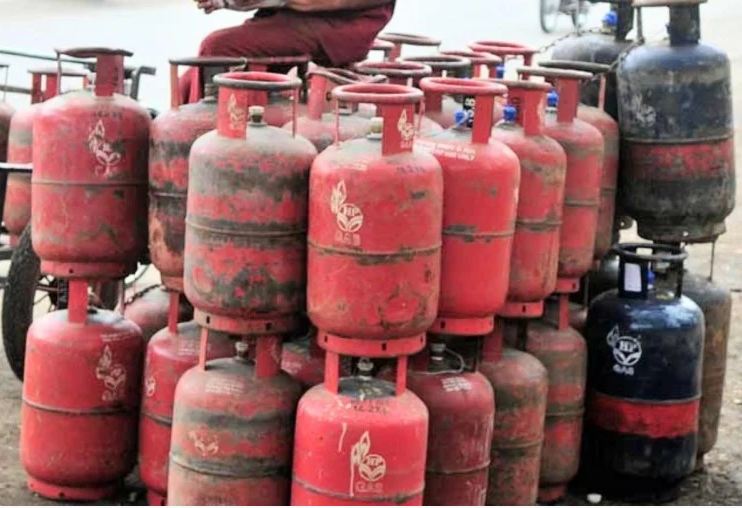Goa is abuzz with excitement as vintage bike and car owners, users, collectors and fans are decking […]

COST OF LIVING IN GOA SHOOTS UP!
Finance, Mar 13- Mar 19, 2021 March 12, 2021COST OF LIVING: Though the Prime Minister may claim that India has recovered from Covid-19, the ground reality is that prices of essential commodities like cooking gas without subsidy has shot up steeply. This in turn has had a cascading effect. Particularly on eating out even in the humble Udipi eateries. As for Zomato and Swiggy they charge Rs170 for a masala dosa delivered at home.
By Arvind Pinto
The price of domestic cooking gas has increased from Rs783 to Rs833 within the last two months. There is no subsidy on the increase. The price of petrol has almost touched Rs100 in some parts of the country. Even the price of edible oils used for cooking has increased by 50%. The Adanis and Ambanis are growing richer with the boom in the stock market while the middle class is sinking into poverty.
ONE of the common questions that many often put to me: Is Goa an expensive place? The answer to this depends on the person asking the question.
What do the locals Goan say? Many of the older folk, who have seen life during the Portuguese colonial times will relate stories of how cheap living used to be once upon a time! If you have the patience you should listen to their stories of the good old days, they would tell you of the foreign goods that were available in Goa when they the same were not found even in the Bombay markets.
Their money had value. Food and alcohol were both cheap and plentiful. Needs were few, but everyone had sufficient. Today, this is a dream, since with Goa becoming a part of India, those good old days remain only in fading memories amongst the elderly folk who still remember the days when most of their basic provisions could be had for a rupee! Today even today’s generation complain that prices in Goa are on the rise every now and again, too quickly.
Over the last decade prices in Goa have risen steadily due to several factors. The primary factor is that Goa being a small territory, there is little actual production. According to Goa government sources, rice and coconuts are the only produce of the State. With urbanization, rice fields gradually converted into residential or commercial properties. Goa today is semi-urbanized; with the result there is little agriculture and food is all but imported. There is a certain amount of horticulture and coconut, mango and cashew are grown, the last being the component from which the famous local drink feni is produced.
However, because most of the food comes in from the neighboring states of Karnataka and Maharashtra, the food prices on an average are higher by about 10%, as compared to prices in Mumbai. With the spread of covid-19 and the lockdowns imposed no foreign tourists visited Goa; in fact, this is good news for the locals, who say that in the markets they are able to buy fish at more reasonable prices! During the tourist season the best fish invariably goes off to the resorts and restaurants visited by tourists and there was little left for the locals to enjoy at home.
HOUSES IN PLENTY
MOST native Goans have their own houses or homes either in the villages or in the towns. Many of the richer middle class Goans have a minimum of two houses: the ancestral house in the village, as also either a house or an apartment in the city. In the housing boom of the 90s and the beginning of this century, many Goans working abroad have also invested in flats or apartments either in the towns or resorts coming up along the sea fronting beaches of the coastal areas.
This was possible since the building rates were relatively low compared to Mumbai or Delhi. For while the cost of construction was almost equal to that of Bombay or Delhi, the cost of land was significantly lower than that of the two metropolises. To give you an example, property prices in capital city Panaji is around Rs6,500 per square foot. This is significantly lower than many of the prime locations in the bigger cities of India. Resale properties do not have much value in Goa, since real estate is developing in Goa.
Also, with the growth of tourism there is a demand for properties along the shore line villages. In order to attract buyers, many of the developers of these beach properties, sold the concept of a rent back; whereby the investors would get a sum of money for renting back their properties which were given out to tourists. Unfortunately, with the decline of the tourist trade and spurt of development, many of these rent back schemes have failed.
According to one survey the cost of living in Goa is lower compared to that in Mumbai. Consumer prices in Goa are 4.77 % lower as compared to Mumbai. According to the same statistics rent prices are 66% lower than in Mumbai. But the statistics do not tell you there are not many units in Goan cities available for rent. There are many who have invested in Goa, but would prefer to keep their flats or apartments locked rather than to put them for sale in the market!
Many tourists and travelers want to know how much they budget for if they want to enjoy a holiday in Goa. Of course, the answer to the question depends upon who is asking the question. For many foreigners earning in euros or dollars, Goa, despite the quantum jump in prices, is still relatively a cheap destination. For foreign tourists Goa is a cheap destination, not because of Goa itself, but since the rupee continues to fall vis-à-vis the euro or the dollar. With the result, a dollar gives you, Rs50 or a euro fetches you Rs90 rupees. There are several informal money changers who will give you a better rate. Therefore, for foreign tourists, Goa is still a cheap destination, since their euros or dollars, thanks to the deflation of the rupee, gives them enough money to splurge in the good life!
HIGHER COST OF FOOD
THE cost of food in Goa is higher than other cities in India. In Goa the price of food and drink is determined according to the place. If you travel to the less urban areas, the prices of food are lower than those prevailing in the urban areas. The cost of food especially in tourist villages in significantly higher than that in other villages.
Thinking of settling in Goa? This is probably a good time! Property prices in Goa are much lower than in many cities of the country. Housing in the Goa’s cities or towns is relatively reasonable compared to investing in Bombay or Delhi. However, remember, there is little resale value and even after several years, the value of your investment will not increase substantially.
We all know that fuel prices in India especially petrol is at an all-time high. The average petrol rate in Goa is 89 rupees as on the 6th March 2021. This is lower than the price at Mumbai which is 97.5 or even Delhi which is 91 per liter. The price of petrol in Goa is relatively cheap since value added tax is only 0.1%
Goa unfortunately is not an ideal locale for the salaried class. By and large, salaries in Goa are lower than that in most other cities of the country. This is because there are very few large corporations and employers tend to pay lower salaries to their staff. Many employers say that the average Goan does not have to spend money on rent and since Goa in not an A class city in terms of the central government classification, the average salaries tend to be lower than other cities of the country.
Most tourists complain of the lack of good public transport. While local transport is relatively cheap, the buses are generally packed and uncomfortable; move so in these times where social distancing is the norm. Autorickshaws are few and far between and do not have any system of a meter. Autorickshaws generally park themselves at a particular spot and the fares arbitrary. A hapless passenger is made to pay a double fare, since the assumption is that the autorickshaw would have to come back empty. Travelling by taxi or autorickshaws is an expensive proposition in Goa.
The Goan economy depends upon tourism. A good many Indian tourists who come to Goa, enjoy spending – being it eating, drinking or on entertainment. For since many of them are on holiday, spending a little more money, makes for a wonderful holiday, even if Goa is a little costlier than their home towns!
(Arvind Pinto is retired as a Chief Income-Tax Commissioner and is now Standing Counsel for the IT Department in the Bombay HighCourt)














